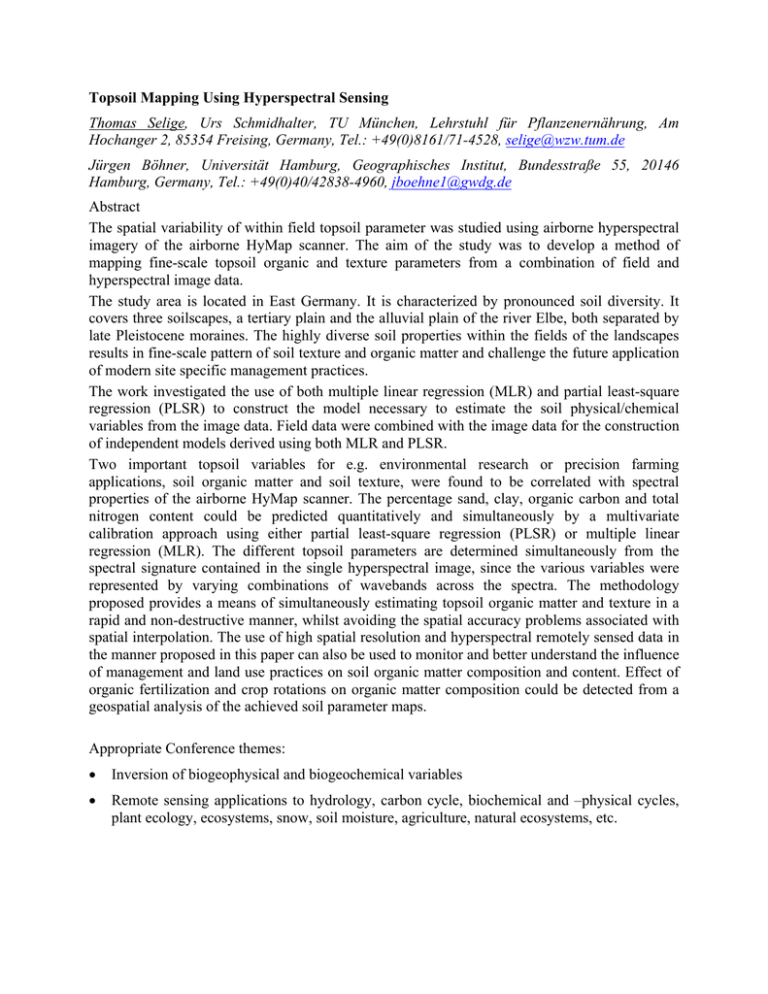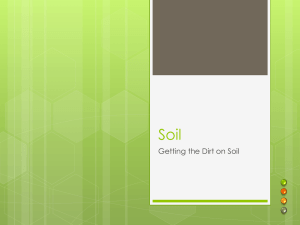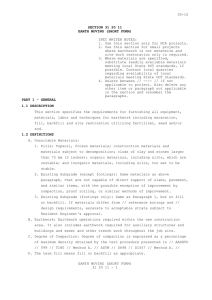Topsoil Mapping Using Hyperspectral Sensing
advertisement

Topsoil Mapping Using Hyperspectral Sensing Thomas Selige, Urs Schmidhalter, TU München, Lehrstuhl für Pflanzenernährung, Am Hochanger 2, 85354 Freising, Germany, Tel.: +49(0)8161/71-4528, selige@wzw.tum.de Jürgen Böhner, Universität Hamburg, Geographisches Institut, Bundesstraße 55, 20146 Hamburg, Germany, Tel.: +49(0)40/42838-4960, jboehne1@gwdg.de Abstract The spatial variability of within field topsoil parameter was studied using airborne hyperspectral imagery of the airborne HyMap scanner. The aim of the study was to develop a method of mapping fine-scale topsoil organic and texture parameters from a combination of field and hyperspectral image data. The study area is located in East Germany. It is characterized by pronounced soil diversity. It covers three soilscapes, a tertiary plain and the alluvial plain of the river Elbe, both separated by late Pleistocene moraines. The highly diverse soil properties within the fields of the landscapes results in fine-scale pattern of soil texture and organic matter and challenge the future application of modern site specific management practices. The work investigated the use of both multiple linear regression (MLR) and partial least-square regression (PLSR) to construct the model necessary to estimate the soil physical/chemical variables from the image data. Field data were combined with the image data for the construction of independent models derived using both MLR and PLSR. Two important topsoil variables for e.g. environmental research or precision farming applications, soil organic matter and soil texture, were found to be correlated with spectral properties of the airborne HyMap scanner. The percentage sand, clay, organic carbon and total nitrogen content could be predicted quantitatively and simultaneously by a multivariate calibration approach using either partial least-square regression (PLSR) or multiple linear regression (MLR). The different topsoil parameters are determined simultaneously from the spectral signature contained in the single hyperspectral image, since the various variables were represented by varying combinations of wavebands across the spectra. The methodology proposed provides a means of simultaneously estimating topsoil organic matter and texture in a rapid and non-destructive manner, whilst avoiding the spatial accuracy problems associated with spatial interpolation. The use of high spatial resolution and hyperspectral remotely sensed data in the manner proposed in this paper can also be used to monitor and better understand the influence of management and land use practices on soil organic matter composition and content. Effect of organic fertilization and crop rotations on organic matter composition could be detected from a geospatial analysis of the achieved soil parameter maps. Appropriate Conference themes: • Inversion of biogeophysical and biogeochemical variables • Remote sensing applications to hydrology, carbon cycle, biochemical and –physical cycles, plant ecology, ecosystems, snow, soil moisture, agriculture, natural ecosystems, etc.



